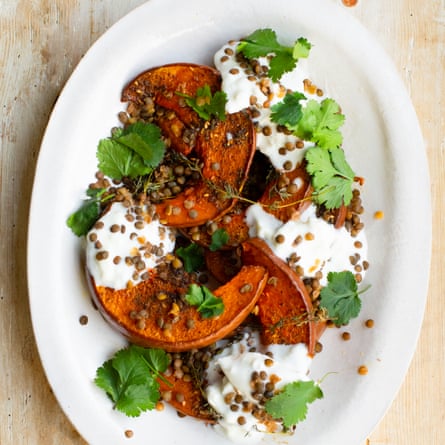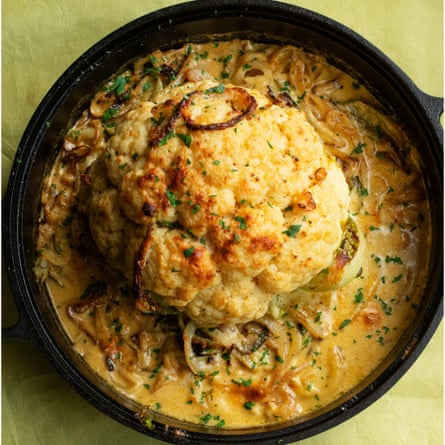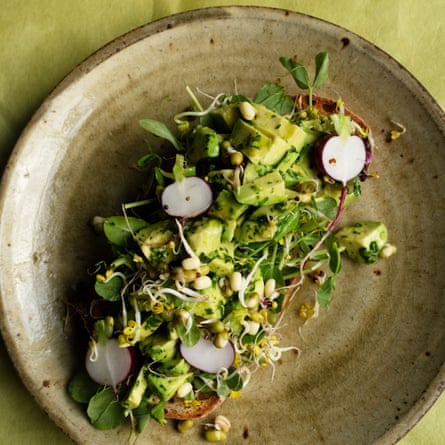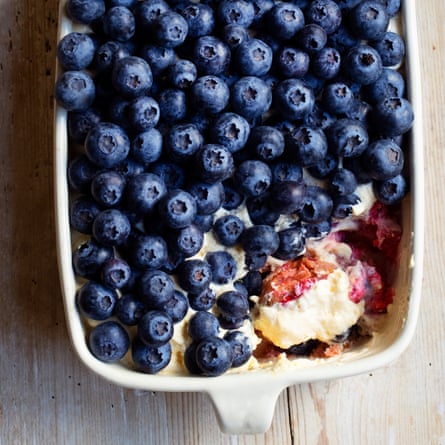What and how we eat has steadily changed over the 20 years since OFM first came on the scene. New ingredients have appeared, old ones given a new role, some have stayed while others have faded into obscurity. We may well roll our eyes at food fashions, but it remains a fact that sometimes an ingredient will slowly shift, albeit briefly, into the limelight.
Part of this change has included a reappraisal of the fruit and vegetables we eat and their place in our everyday cooking. Encouraged by farmers’ markets and seed merchants, some older varieties that had slipped out of popularity have returned, particularly for those with allotments and vegetable gardens.

Some fruit and vegetables we took for granted – artichokes, celeriac, quinces, to name just three – have been elevated to a new popularity. Others we had overlooked – chard and pea shoots, for instance – are now so popular they are difficult to avoid. It has been a while since I was last handed a restaurant menu without the word beetroot on it.
In what is, frankly, the British way, some ingredients have been embraced, well-used and then sent on a low dive back to obscurity. Sun-dried tomatoes, anyone? Purple cauliflower, Chinese artichokes, yellow courgettes, golden kiwi fruit? All briefly embraced and then returned to where they came from. Others remain popular. Pomegranate seeds have their place, but rarely where they appear now. Some produce was abandoned when their price rocketed (pine nuts) or due to news stories of the environmental disaster our sudden overconsumption was causing.
A few that were elevated to star status have remained there: the Jerusalem artichoke carries on; cavolo nero, with its gorgeous plumes of dusky blue, is now as popular as savoy cabbage; and kale is ubiquitous. The current crop of “unavoidables” includes carrots and radishes of various hues, fancy mushrooms and crunchy “winter” tomatoes. Currently, you could be forgiven for thinking if an ingredient hasn’t been fermented then it’s not worth eating. This month’s issue has given us a chance to reflect on a few of those ingredients whose place has changed since we first published.
1: Beetroot
Beetroot is everywhere, turning up in the past five or six years in takeaway salads and sandwiches, pastas and risottos. It appears in fritters, soups and even cake. This root bleeds attractively when pierced, sending its garnet tones out to Instagram feeds throughout the land.
Beetroot made the jump from the pickle jar to the oven just a few years ago, but seems destined to stay. Its popularity was cemented the moment someone discovered how good – intense, sweet and earthy – it becomes when roasted in foil. Its affinity with goat’s cheese was never in doubt, but it can turn up a little too often for my liking.
I remain a fan, though, mostly in the summer and autumn when the leaves are good enough to include. I feel lucky that I like it, but sorry for those who don’t, who will find the bloody black-red globes difficult to dodge nowadays.
Roast beetroot, bitter leaves and basil pesto (pictured top)
Serves 4
beetroots 450g
olive oil 2 tbsp
cider vinegar 2 tbsp
bitter salad leaves 150g, watercress etc
tomatoes 150g
For the pesto
basil leaves 50g
pine nuts 15g
garlic 1 clove, peeled
olive oil 5 tbsp
Set the oven at 180C fan/gas mark 6. Wash and trim the beetroots, taking care not to pierce their skin. Place them on a baking sheet and cover loosely with foil. Bake the beetroots for about 45-50 minutes, until they are tender right through to the middle.
Mix together the olive oil and cider vinegar. Peel the beetroots then slice them into the dressing and set aside.
Make the pesto by putting the basil leaves in the bowl of a food processor. Add the pine nuts, peeled garlic clove and the olive oil. Process for a few seconds to a rough, loose paste, then season with a little salt and transfer to a small bowl.
Wash and shake dry the salad leaves. Put the leaves in a large serving bowl and add the sliced roasted beetroot and its dressing. Slice the tomatoes and add to the salad. Add about half the basil pesto, saving the remainder for another time. It will keep, covered with a little olive oil, in the fridge for serval days.
Gently toss the salad at the table before serving.
2: Burrata
I’m killing two birds with one stone here. Pumpkin, loved for its vibrant colour, and burrata, the cheese that is currently ousting mozzarella from its throne.
I’m not sure I had even heard of burrata when we started OFM. Now, this quivering, milky egg of cheese has usurped even mozzarella as our go-to fresh cheese. Some find it bland and overrated, but I choose it for its gentle texture, so soft and creamy it barely qualifies as cheese. The uses are limited – you can’t slice it or slap it between two pieces of bread, neither can you cook with it. And yet burrata has an almost permanent place in my fridge. Few lunches are quicker than one where you dress this tender oval with fresh peas, olive oil and a nest of pea shoots. Or split one open and let the molten interior flow over thick sourdough and a hash of chillies and coriander. It marries perfectly with basil leaves and mint; prosciutto and cod’s roe; peaches and figs.
Burrata is almost soft enough to be considered an impromptu sauce. I let the snow-white curds ooze over grilled aubergine with thyme and lemon; melt over baked tomatoes and basil; and even use them as a dip for new season spikes of puntarella or asparagus. Likewise, baked pumpkin or butternut squash.
Baked pumpkin, burrata and lentils

Serves 2-3
pumpkin or squash 1kg
olive oil 3 tbsp, plus a little extra
small green or brown lentils 100g
coriander leaves a handful
za’atar 1 tbsp
thyme leaves 1 tbsp
thyme springs 10
burrata 200g
Set the oven at 180C fan/gas mark 6. Cut the pumpkin into thick slices, place in a single layer on a baking sheet or roasting tin and pour over the 3 tablespoons of olive oil. Turn the slices over so they are coated with oil, then bake for about 20 minutes till translucent and tender.
Bring a pan of water to the boil, add the lentils and cook for about 20 minutes till tender. Drain and toss them in the extra olive oil, a grinding of salt and black pepper, and the coriander leaves.
Mix together the za’atar and the thyme leaves. Grind in a little black pepper, then scatter the mixture over the pumpkin slices. Add the sprigs of thyme and return to the oven for a further 10 minutes.
Transfer the pumpkin to a serving dish and scatter with the lentils. Break the burrata into small pieces and add to the pumpkin.
3: Cauliflower
Is there a vegetable whose place has been so effectively elevated as the cauliflower? Now it is most often seen grilled or baked whole, its edges charred and peppered with za’atar or chilli oil. Rather than appearing in florets under cheese sauce, the cauli is cut into thick steak-like slices, to be grilled or shallow fried. I like this, and also when the whole head is cooked in one piece to cut into slices, like a cake.
I relish its new starring role – though I wish more shops would sell it with more of its outside leaves attached – but if I’m honest, I still believe the cauliflower was made to be coated in cheese sauce. Nowadays, I am no longer happy to serve up the rather pedestrian mornay sauce, instead embellishing it with softened onions and increasing the mustard I first added in the 1990s.
Baked cauliflower with onions and cheddar

Serves 2-3
cauliflower 1 large, whole, about 1kg
onions 2 medium
olive oil 3 tbsp
double cream 350ml
grain mustard 1 tbsp
dijon mustard 2 tbsp
cheddar cheese 100g
Trim the cauliflower, cutting off any dry or bruised leaves. Keep in place any small, pointed ones that are in good condition. Pour enough water into a large, deep saucepan to come half way up the sides, lower in the cauliflower then cover with a lid. Leave to steam for 15 minutes, then remove from the heat.
While the cauliflower steams, peel and thinly slice the onions. Set the oven at 180C fan/gas mark 6. Pour the olive oil into a shallow pan and place over a moderate heat, add the onions and cook till soft and translucent. Let them colour a little – they should be pale gold – then stir in the cream, a little salt and pepper and the mustards.
Finely grate the cheese and stir into the cream and onions. Remove the cauliflower carefully from its water, then place it in the centre of a baking dish or roasting tin. Spoon the cream and onion sauce around and over the top of the cauliflower and bake for 20 minutes till pale gold in colour.
4: Avocado
It is difficult to follow the ups and downs of the avocado. A whipping boy of the food police, the poor old avocado is loved and loathed in equal measure. (I’m not sure avocado toast was even a thing before the launch of OFM.) To this cook and eater, avocados, sliced and laid on hot, thick toast, their firm flesh dressed with herbs, seeds and fabulously fruity olive oil, remain one of my favourite things to eat. Like bananas, avocados live or die by their level of ripeness. An overripe avocado is as unpalatable to me as a squashy banana, so I watch their progress carefully.
Avocado and sprouted seeds

Makes 2 toasts
coriander leaves 20g
olive oil 4 tbsp
pea shoots 2 handfuls
avocados 2, medium
sprouted mung beans 40g
sprouted radish seeds 30g
mixed sprouted seeds 40g
radishes 4
sourdough toast 2 thick slices
olive oil to finish
Put the coriander leaves in a blender or food processor and pour in the oil. Add a good pinch of salt and a few twists of pepper. Process for a few seconds to a bright green dressing, then transfer into a mixing bowl. Put the pea shoots into a bowl of iced water to crisp them up.
Peel the avocados and remove their stones, then cut the flesh into small cubes. Toss the avocado gently with the dressing. Rinse the sprouted beans, radish and seeds in cold running water, then shake dry.
Trim the radishes and slice them in half, then toss them with the avocado. Toast the bread till golden on both sides, then pour over a generous amount of olive oil. Drain the pea shoots, shake them dry and pile them on top of the toast. Scatter the seeds on the toasts, then spoon over the avocado, radishes and dressing.
5: Blueberries
It is difficult to think of an ingredient whose rise in popularity can equal that of the blueberry. Supermarkets promote them because of their almost infinite shelf life. Parents feed them to their children in place of sweets. And, unlike other berries, you can get them home without them turning to jam in your shopping bag. Although I eat them every day with breakfast, I still don’t quite see their charm. But I love that someone once described them as like “crunching your way through a punnet of eyeballs”. They lack the heady aroma of a ripe strawberry, the luscious, wine-like juice of a raspberry, the tempting gloss of a blackberry. And yet, in the space of OFM’s life, they have become one of our biggest selling berries, second only to strawberries.
Blueberries are worth eating when you marry them with another, more acidic fruit. Lemon juice will accentuate their elusive flavour, as will raspberries or apricots. A blueberry and apricot cobbler is a fragrant hot summer dessert. I like to stir a ribbon of crushed raspberries through the cream for a blueberry trifle or tirimasu, modern cooking having somewhat blurred the two desserts deliciously into one.
Tiramisu of berries

Serves 6-8
sponge fingers 175g
orange juice 200ml (about 3 oranges)
fino sherry 60ml
eggs 3
caster sugar 4 tbsp
mascarpone 500g
vanilla extract a few drops
raspberries 150g
blueberries 375g
Place the sponge fingers side by side in a serving dish (I use a deep one measuring 24cm x 16cm). Stir the orange juice and fino sherry together, then spoon it evenly over the sponge fingers, cover and set aside for 30 minutes.
Separate the eggs, putting the yolks in the bowl of an electric mixer, the whites in a large mixing bowl. Add the sugar to the yolks and beat till thick and creamy with the whisk attachment, then add the mascarpone and vanilla extract.
Put the raspberries in a bowl and crush lightly with a fork till their juices bleed. Beat the egg whites till thick and foamy, almost stiff. Now fold them, using a large metal spoon, into the mascarpone mixture, then lightly stir in the raspberries. Take care not to turn the mixture pink, you just want a thread of red berries through the filling.
Spread the filling on top of the sponge fingers, cover and leave in the fridge for a further hour.
Cover the surface with the blueberries and serve.
